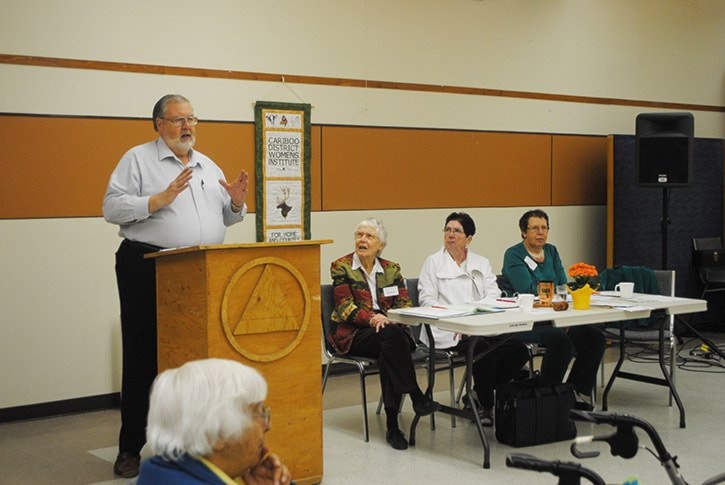Columneetza is an Athabaskan word meaning “the meeting place of the noble ones or gathering place of the princely people,” local historian Barry Sale told the Women’s Institute Rally last Saturday.
“It referred to the area around Williams Lake where the Athabaskan people would often have powwows with the Tsilhqot’ins and with the Shuswaps as well.”
When the Shuswap settled in the area, they kept the name.
“Their first village, wiped out pretty much by small pox, was called Columneetza Village and the first Williams Lake was right around that area.”
Fur traders arrived in the 1820s through to the 1880s, and established several forts — Fort Alexandria in 1842 and Fort Chilcotin, established a few years later.
“All through this area were trails and routes, not only followed by First Nations, but also used by the fur traders, called brigade trails,” Sale said, adding many of the modern day roads follow some of those original trail routes.
“When the gold rush began, it was natural for the gold seekers to follow those trails.”
The fur traders communicated with the First Nations using Chinook jargon as a trading language, which Sale said consisted of English, French and different Aboriginal languages.
“There is nothing like it in the rest of the world. It was used extensively in B.C. If you could speak Chinook you could pretty well communicate with any First Nations person anywhere.”
In Chinook jargon, chuck means water and skookum means mighty or big, so a place called Skookumchuk meant “mighty water.”
In the Cariboo some of the Chinook-influenced names are Tyee Lake. Tyee means “lake of the chiefs.” Nesika means “our, belonging to us.” Canim means “canoe.”
There were Spanish influences too.
In the early 1860s Spanish packers named the San Jose River that ran by the St. Joseph’s Mission.
Pablo Creek was named after another Spanish packer and Spanish Lake was a place where many packers stayed overnight or for a couple of weeks because there was good grass and water located there.
The most famous packer was Cataline.
“Everyone thinks he was Spanish, but he was from the Basque area between Spain and France,” Sale said. Cataline began packing in the Fraser Canyon in 1858 and packed up until 1912.
He would do two or three trips a year from Yale up to the gold fields in Barkerville.
“It was a rough hard path,” Sale said.
During the Gold Rush around 1862, one of his mules went lame, or broke a leg, on the final return trip of the year.
Cataline was soft hearted and didn’t want to kill it, so he turned it lose and figured maybe it would be able to survive.
“He did several more trips the following year and the year after he was going up the mountain in the Fraser Canyon and all of a sudden this mule showed up and stood in line as if it was ready to pack,” Sale said.
It was in good condition and had survived and Cataline was quite surprised.
He ended up naming the nearby mountain Jack Ass Mountain.
Sale, a retired school teacher, was back by popular demand as the guest speaker. He’d been asked to talk about local history.
“I didn’t teach history as a teacher,” Sale said. “I only got interested in history after I retired.”
